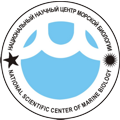 |
Laboratory of Pharmacology
Scientific Head: Manzhulo I.V., senior researcher, Cand. Sci. Biol.
Main fields of research
The main field of research conducted by the Laboratory of Pharmacology is the development of novel drugs from marine organisms that have neurotropic, immunomodulatory, oncosuppressive, and detoxifying effects. The research is aimed at the development and identification of molecular and cellular mechanisms of action of natural and original modified lipid and polysaccharide compounds and a number of low-molecular-weight biological regulators. The Laboratory carries out studies on experimental pharmacology for such pathological states as peripheral and central nerve injury, tonic and neuropathic pain syndrome, glial tumors, neuroinflammation, and spontaneous and induced neurodegenerative processes. To date, the Laboratory has invented a series of biologically active preparations for the correction of neurodegenerative pathology ("Lipidomarin"), normalization of metabolic processes accompanying cardiovascular diseases ("Omegamarin"), treatment of pain syndrome ("Algamid"), correction of excess weight ("Oleamid"), and treatment of poisonings including those caused by radioactive compounds and heavy metals ("Polysorbovit" and "Detoxal"). Several novel compounds with potential anti-pain and anti-tumor effects, as well as complex protein/carbohydrate compositions for solving problems in regenerative medicine, are under development.
Approaches and methods used
- Methods of experimental surgery and modeling of neuropathological processes: tonic and neuropathic pain, nerve injury, neuroinflammation, neurodegeneration, stereotaxic manipulations;
- Physiological testing of animals (using a set of instruments for recording metabolic, general physiological, cognitive, emotional, and pain processes);
- General morphological, histological, histochemical, and immunohistochemical methods of research;
- Microscopy methods: light, fluorescent, laser scanning (confocal), and electron microscopy;
- Methods of immunocytochemistry and flow cytometry;
- Methods of neurophysiological research on surviving brain slices;
- Study of the level of biologically active compounds in tissues of aquatic organisms is carried out by HPLC-MS, gas chromatography, solid-phase competitive enzyme immunoassay, and assay in a cell culture system;
- Search for receptor complexes specific to the substances being developed is performed using the affinity chromatography, electrophoresis, and immunoblotting methods;
- A combination of molecular-biology and bioinformatics methods is applied to search for molecular mechanisms responsible for sensitivity and/or resistance to the compounds being developed;
- Cell culture method is based on stable cultures of tumor and somatic cells and primary cultures of macrophages, microglia, astroglia, and neurons;
- Routine and automated methods for determining cytotoxic, cytoproliferative, and cytokinetic effects of compounds under study;
- Methods of targeted chemical modification of natural compounds for correcting their pharmacodynamic and pharmacokinetic properties.
Range of organisms and objects under study
Laboratory animals (mice and rats) and aquatic organisms from various systematic groups.
Information provided by the senior researcher I.V. Manzhulo.
| Contacts: |
|
Palchevskogo str. 17 |
|
Vladivostok, Russia, 690041 |
|
Phone: +7 (423) 2310905 |
|
Fax: +7 (423) 2310900 |

